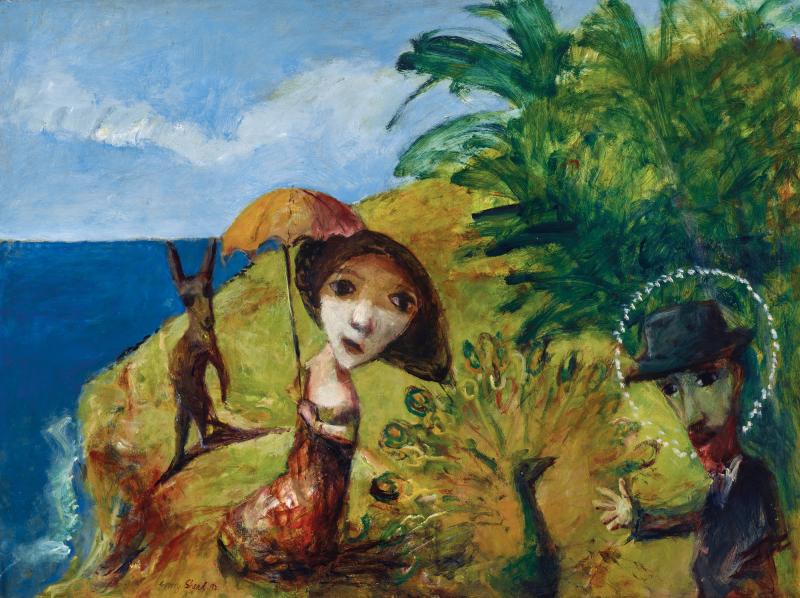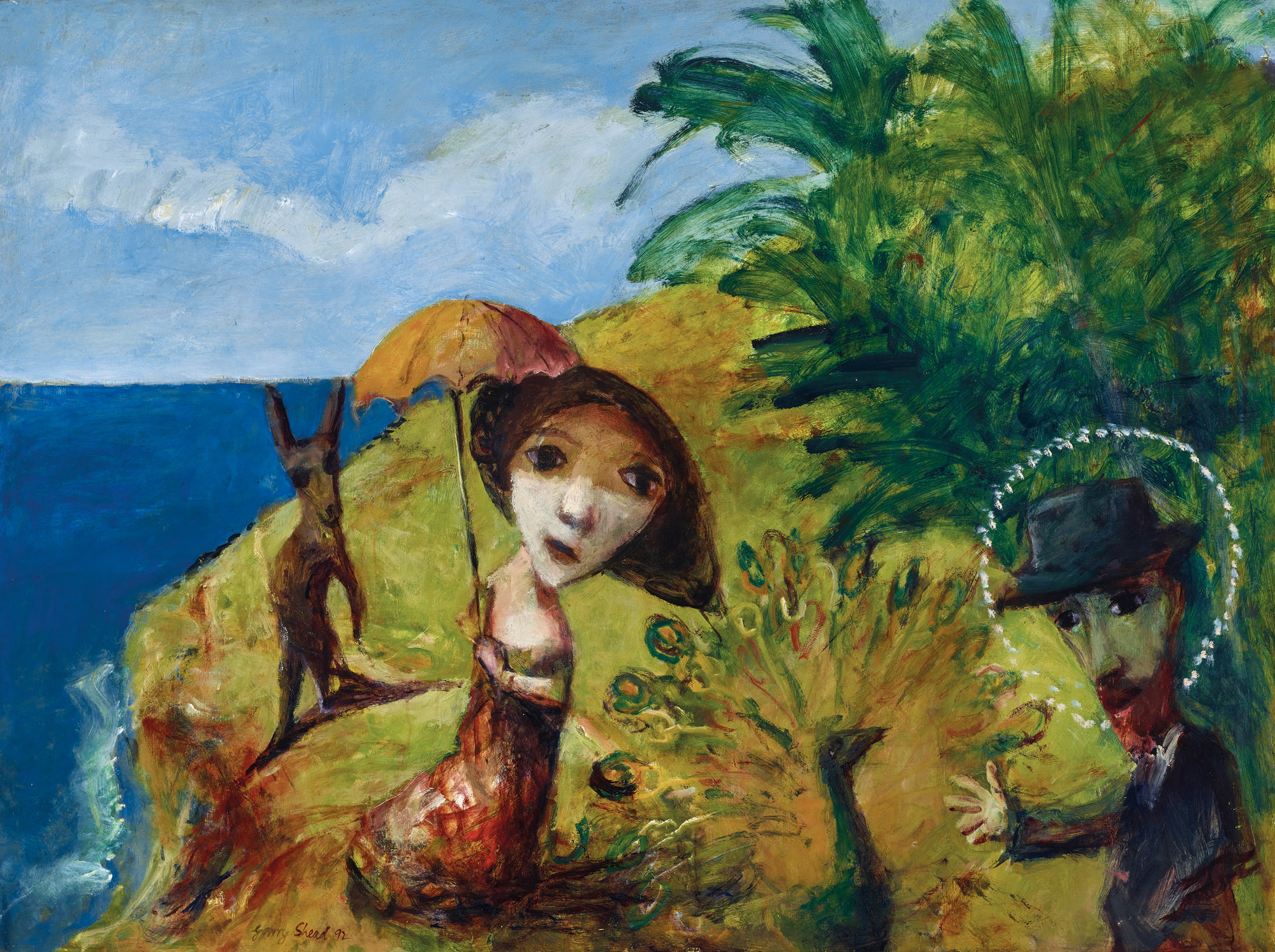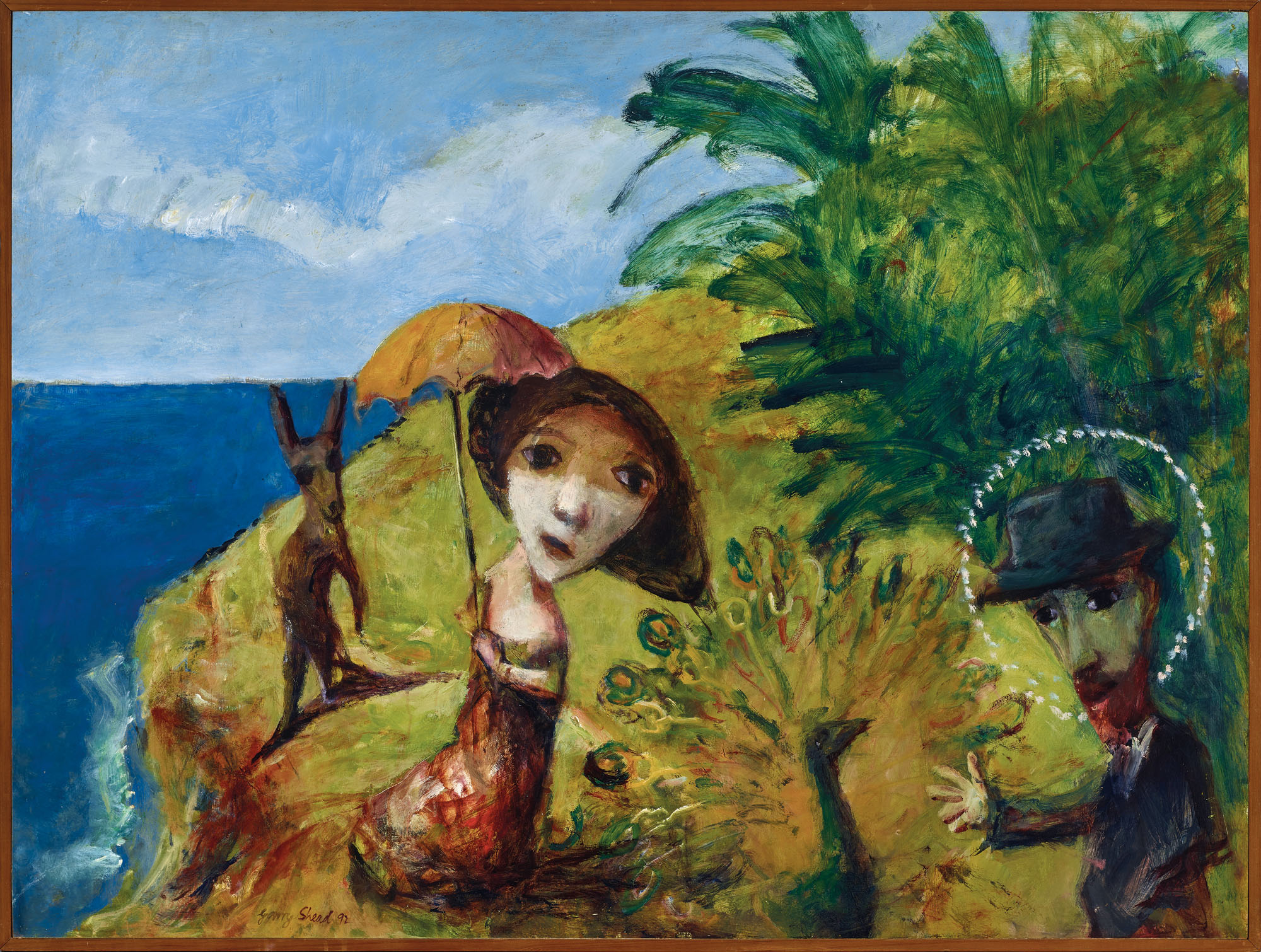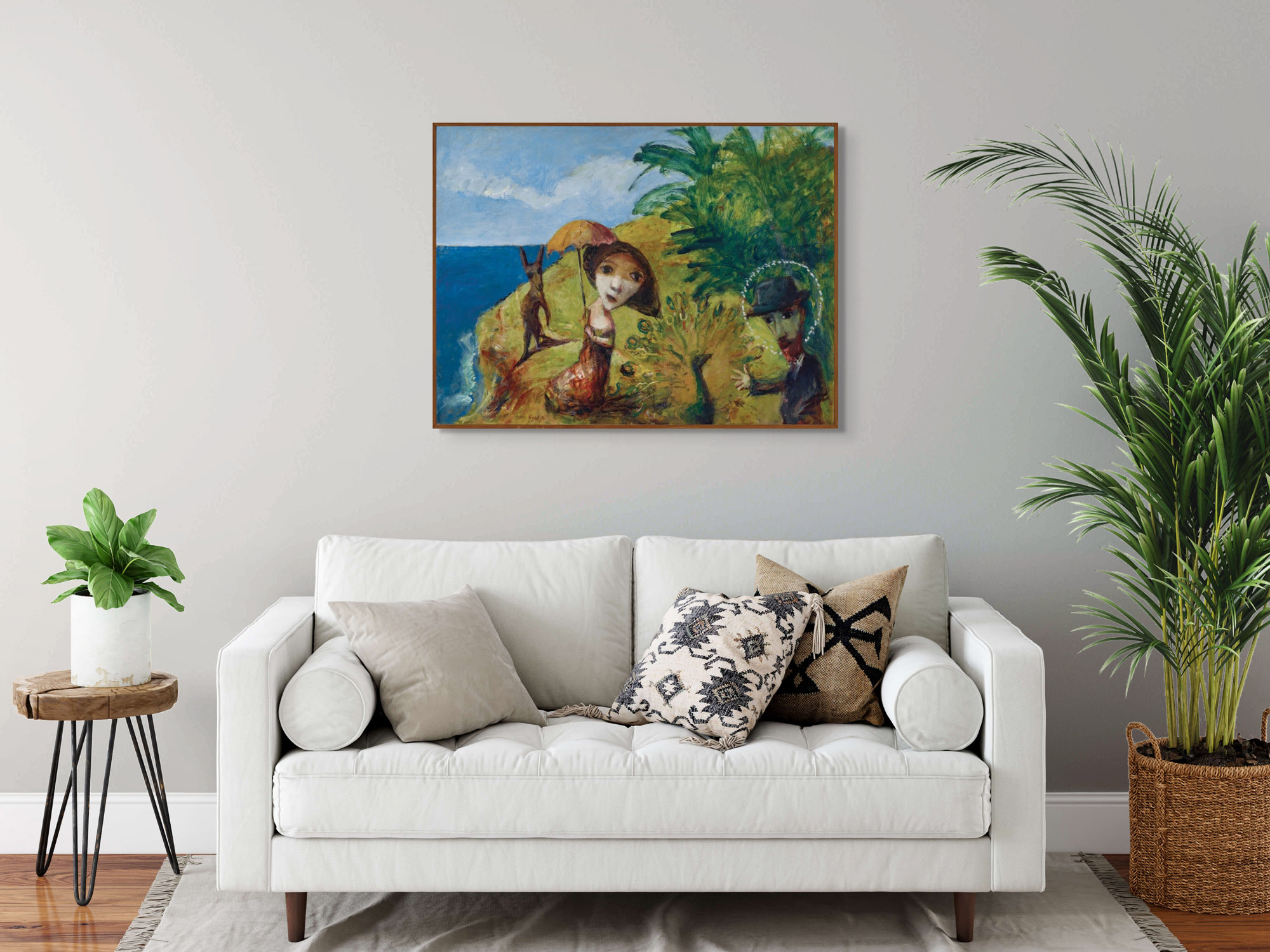GARRY SHEAD born 1942
Aboriginal 1992
Estimate: $50000 - 70000
Description
GARRY SHEAD born 1942
Aboriginal 1992
oil on board
91.0 x 121.5 cm; 93.5 x 124.0 cm (framed)
signed and dated lower left: Garry Shead 92
bears inscription on stretcher verso: ABORIGINAL
Provenance:
(probably) Eva Breuer Art Dealer, Sydney
Private collection, Sydney
Estate of the above
Reference:
Grishin, S., Garry Shead: The D.H. Lawrence Paintings, Craftsman House, Sydney, 1993, p.48, pl.15 (illus.)
Estimate: $50000 - 70000
D.H. Lawrence’s novel Kangaroo has continued to captivate the Australian imagination more than a century after its first publication in 1922. Written by Lawrence during a brief stay in Australia, Kangaroo is a semi-autobiographical tale filled with Lawrence’s vivid perspective on the Australian way of life, the physical landscape, and the rising political undertones of nationalism brewing in the aftermath of World War I.
In 1922, Lawrence landed in Fremantle, Western Australia, where he was repelled by the new and unfamiliar surroundings, characterising the bush and Australian wildlife as untrodden and strange. Lawrence would later find refuge in Thirroul, a small seaside coal mining outpost south of Sydney where he would write the first 300 pages of the novel over a period of six weeks. In his first letter from Thirroul he wrote:
We have got a lovely little house on the edge of the low cliff just above the Pacific Ocean… But it is by no means still. The heavy waves break with a great roar all the time: and it is so near. We have only our little grassy garden – then the low cliff – and then the great white rollers breaking, and the surf seeming to rush right under our feet as we sit at the table.1
Garry Shead was introduced to Lawrence’s diaries while on a trip to the Sepik Highlands in Papua New Guinea in 1968. This first encounter struck a strange and familiar chord within Shead, and quickly grew into an obsession as he saw his own perspective of the erotic and the spirit of place, echoed within the pages of Kangaroo.
Shead famously introduced fellow artist Brett Whiteley (1939-1992) to Thirroul in 1973. The two on this occasion completed a masterful collaborative diptych Portrait of D.H. Lawrence 1973, painted from next door to Lawrence’s once-residence Wyewurk. The house is set in the painting, teetering upon a plunging clifftop and battered by whispering tendrils of the sea. Art historian Sasha Grishin writes, ‘Whiteley could also feel the presence of Lawrence hovering around the place; and it was at Thirroul that Whiteley died.’2
Kangaroo and its potent reading of Australian life similarly captivated Sidney Nolan (1917-1992), who in 1982 produced eight paintings based upon the novel. Nolan’s vision of Kangaroo is characteristically stark and empty and bordering upon the surreal.
In 1991, Shead began making drawings based on both narratives and the spirit of Lawrence’s Kangaroo, beginning to render them in oil paint in March of 1992. Within six months, Shead in his Bundeena home studio, just a stone’s throw north of Thirroul, had completed his D.H. Lawrence series, a staggering fifty paintings. In these now celebrated works, Shead channels his spiritual mentor in a manner that is distinctly his own, full of life and all its drama and complexities.
In Aboriginal 1992, we have an image skilfully rendered and ripe with mystery and visual intrigue, as the scene’s two protagonists become intruders in their seaside getaway. Confronted by a curious kangaroo and a peacock, we witness human intimacy in a state of suspension by the forces of the land they occupy. Thin, hazy and at times dynamic glazes of paint instil a lively, daydream quality where anything could unfold at any moment. It is Shead’s use of his characteristically rich and bright pallet, that renews on the surface of Aboriginal a sense of leisurely optimism. The painting is sumptuous in its detail and full of sunlit charm.
Being considered now for decades as one of Australia’s most iconic figurative painters of his generation, this series of paintings is an important marker in the trajectory of Garry Shead’s career and are among the most celebrated paintings of his output. This effect was compounded the following year in 1993, as Shead would go on to win his first Archibald Prize. As a result, the demand for his D.H. Lawrence series would reach a fever pitch, becoming an incredibly sought-after slice of Australian art history.
Footnotes
1. Grishin, S., Garry Shead: The D.H. Lawrence Paintings, G + B Arts International, Sydney, 1993, p.11
2. Grishin, S., Garry Shead and the Erotic Muse, Fine Art Publishing, Sydney, 2001, p.94
Rory Simmons
Specialists
-

Cameron Menzies, Chairman & Head of Private Sales
cmenzies@menziesartbrands.com
+61 (0) 466 636 142 -
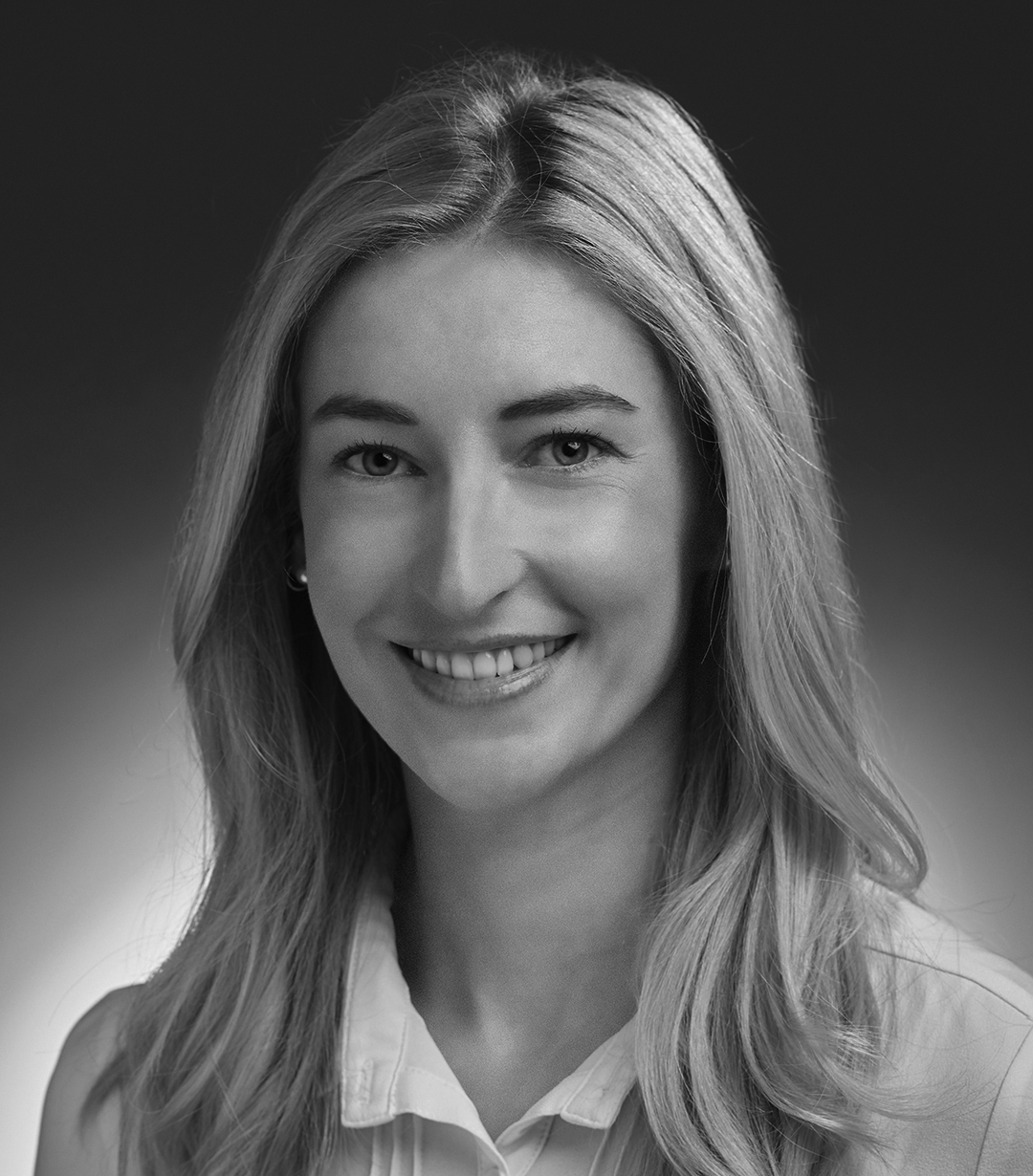
Asta Cameron, Art Specialist
acameron@menziesartbrands.com
+61 (0) 400 914 088 -

Clementine Retallack, Front of House Manager & Associate Art Specialist
cretallack@menziesartbrands.com
+61 (0) 478 493 026
Location
Sale & Exhibition Details
-
Auction
27 March 2024
6:30PM AEDT
1 Darling Street
SOUTH YARRA VIC 3141
artauctions@menziesartbrands.com -
Exhibition
-
Sydney
14-17 March 2024
10:00AM to 5:00PM AEDT
12 Todman Avenue
KENSINGTON NSW 2033
art@menziesartbrands.com -
Melbourne
21-26 March 2024
10:00AM to 5:00PM AEDT
1 Darling Street
SOUTH YARRA VIC 3141
artauctions@menziesartbrands.com
-
